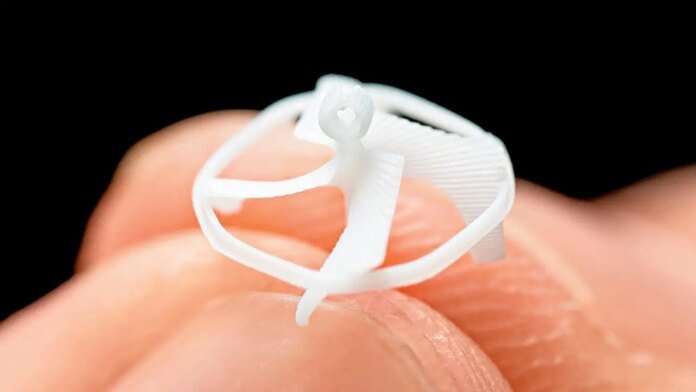Engineers at UC Berkeley have developed the world’s smallest wireless flying robot, measuring less than a centimeter in diameter and weighing just 21 milligrams. Inspired by bumblebees, the tiny device can hover, change direction, and hit small targets with precision.
Unlike larger drones, the robot has no onboard battery or flight electronics. Instead, it uses an external magnetic field to generate lift and steer by spinning two tiny magnets embedded in a propeller-shaped body allowing more precise control.
3D-Printed robot needs no electronics to walk
Pic/University of California San Diego
Researchers at the University of California San Diego have developed a fully functional walking robot that requires no electronics—just a cartridge of compressed gas and a single run on a desktop 3D printer. Printed entirely from flexible filament in one piece, the six-legged robot uses a pneumatic system to move, mimicking the motion of steam engines. The $20 (approximately Rs 1,800) robot operates using a soft, air-powered circuit that alternates pressure between its legs, enabling it to walk across sand, turf, and underwater.
Regular transistors turned into brain-like neurons
PIC/ISTOCK
Researchers have discovered a method to transform a standard silicon transistor into a device that behaves like both a brain cell and a connection between brain cells —known as a neuron and a synapse—by simply modifying its operation. The breakthrough, published in Nature more energy-efficient artificial intelligence (AI) hardware.


